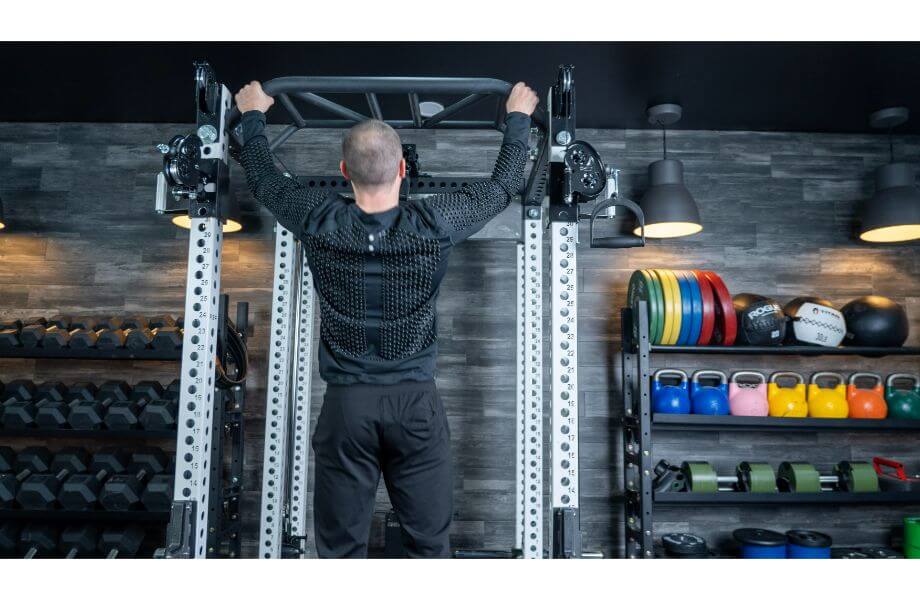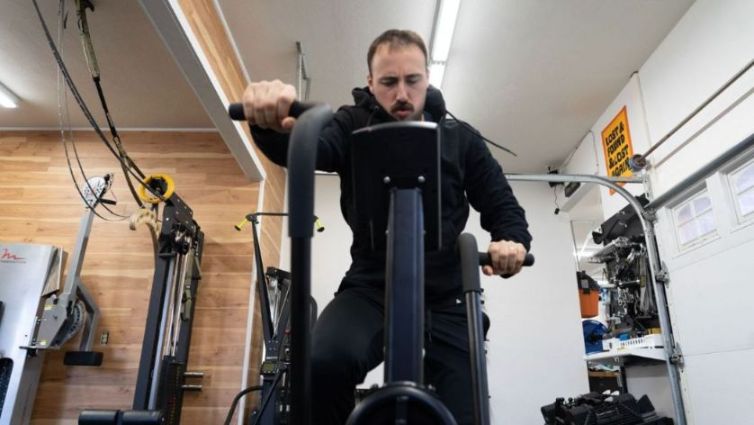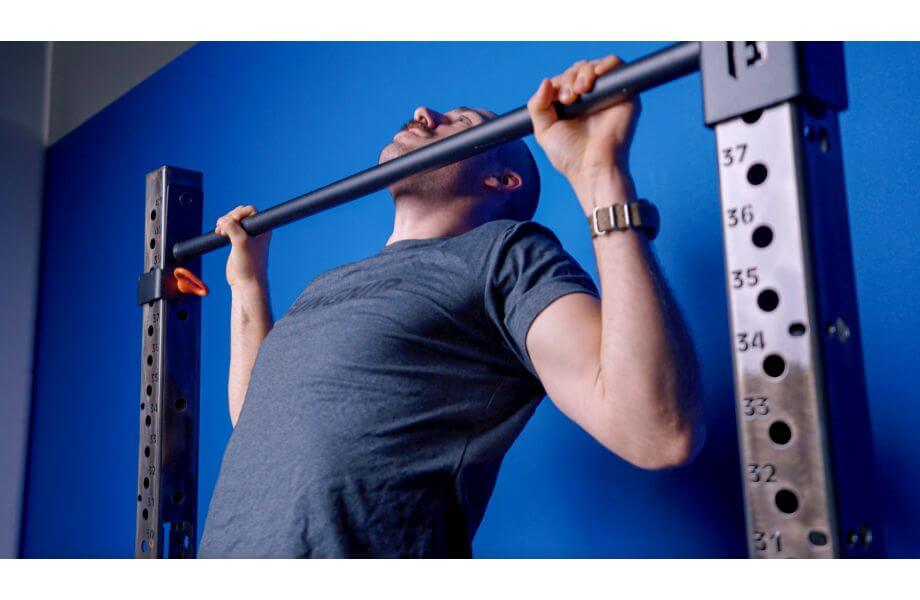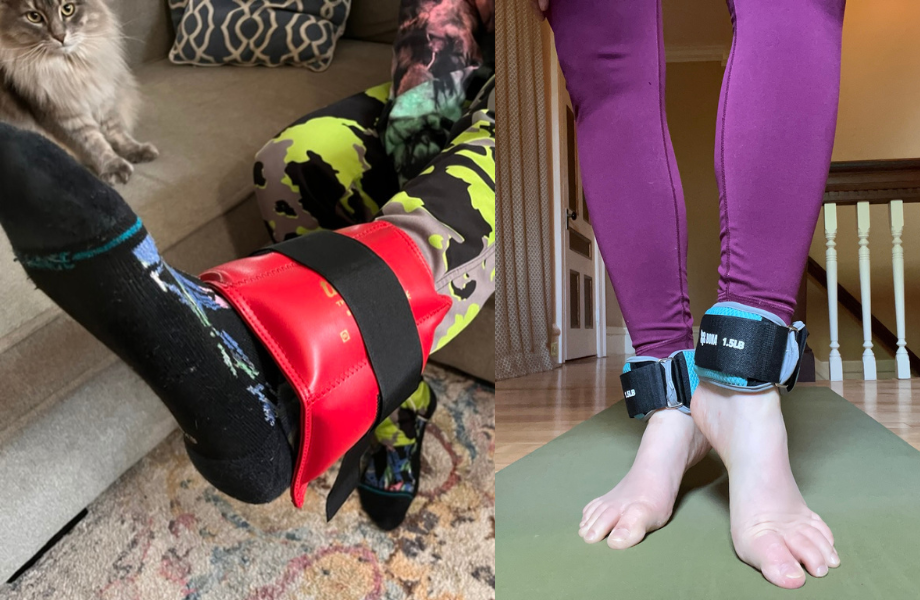You’ve got the shoes. You’ve signed up for the race. You’re ready to run. But have you considered cross-training as the key to unlocking a healthier and potentially faster marathon? Marathon training is no joke. Running involves repetitive motions that can easily lead to injury, especially when you’re training for such a long race. Cross-training is a viable way to keep up with your training schedule while cutting down on repetitive motion, all the while strengthening your body.
Cross-training for a marathon does more than give your hip flexors a rest. The right plan can complement your marathon training to make you a faster, stronger runner, and potentially keep you injury-free. This type of training can come from a number of disciplines, from swimming laps to adding strength and agility training, or plyometrics. Training in different modalities (types of exercise) can build explosive power, encourage joint stability, and enhance speed. You can also use this type of training to balance running with low-impact cardio, like using the elliptical or rowing machine.
Stay tuned for the benefits of cross-training for marathons and how to implement it into your marathon training.
What is Cross-Training?
Cross-training is training in multiple sports/disciplines/activities with the goal of using cross-training to improve in your chosen sport. Many sports include repetitive motions that cause the primary mover muscles to get stronger, while muscles that aren’t used as often either don’t get stronger or become weaker over time.
Cross-training is designed to utilize and strengthen both mover and stability muscles in ways they aren’t when doing your chosen sport. The ultimate goal is to improve performance in your main sport.
For example, runners may do plyometrics to improve power and speed or swim with aqua jogging and cycling to build aerobic endurance. Swimmers may do rowing, and many different athletes participate in yoga and pilates to develop core strength, balance, flexibility, and mobility.
Benefits of Cross-Training (Why Runners Should Do Cross-Training)
Cross-training benefits athletes in most sports, but it’s particularly helpful for runners because of the repetitive nature of the sport. A calculated cross-training schedule can improve performance times as well as build strength and endurance and potentially prevent injury.
Power and Explosiveness
If you break running down to its core movements, it’s basically hopping from one foot to the other in quick succession. The faster and more efficiently you do that, the faster you’ll be. Plyometrics is a series of jumping exercises that builds speed and explosiveness while also requiring balance and strength to maintain proper form. In many ways, plyometrics exaggerate and mimic running movements to develop strength.
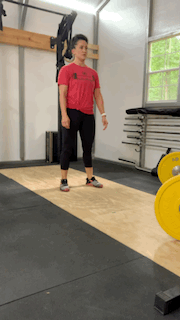
A 2014 study1 published in The Journal of Strength and Conditioning Research and conducted among male middle- and long-distance runners found that a heavy plyometric training plan increased power and explosiveness after only six weeks. Similarly, a small 2017 study2 in the Journal of Sports Science found that after a 12-week plyometric training program, participants’ sprint times decreased.2
Balance, Coordination and Strength
A 2022 study3 published in the International Journal of Advanced Multidisciplinary Studies explored the effects of cycling and swimming as modes of cross-training for runners. Results showed that cycling developed endurance, power, flexibility, agility, speed, and balance. Swimming improved flexibility, agility, speed, and balance. Both forms of exercise can also develop aerobic capacity. Additionally, swimming or cycling can reduce the wear and tear and muscle soreness that can come from marathon training.
Strength training and various types of strength-related cross-training can improve aerobic performance, too. A 2015 study4 published in The United States Army Medical Department Journal found that women who participated in cross-training programs had better muscular and aerobic endurance.
Injury Prevention
Running injuries are common due to the repetitive nature of running. Recreational runners are at particularly high risk because they may not have the same endurance and strength foundation or access to a running coach like professional runners.
However, cross-training as an injury prevention tool is a mixed bag. Some studies, such as the 2019 study5 published in the American Orthopaedic Society for Sports Medicine, do not find a statistically significant difference in injury rate between runners who do cross-training programs. In the case of the 2019 study, it was a strength training program.
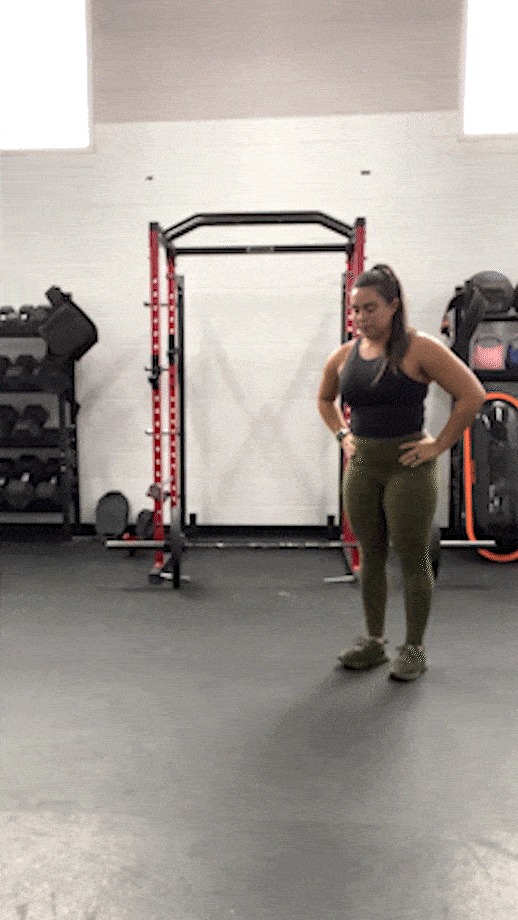
However, in a 2018 study6 from Sports Science Health, participants who followed a plyometrics program showed fewer signs of muscle damage and fewer incidences of injury versus participants who did a core exercise program or no program at all. The study doesn’t explain why plyometrics benefited runners, but the changes were statistically significant.
Beyond developing body strength, agility, or flexibility, cross-training can give the body a chance to recover in between hard training sessions. A 2018 study7 published in the Journal of Strength and Conditioning Research found that cycling and riding an Ebike maintained and improved the aerobic endurance of high school cross-country athletes. They suggested that using these two types of exercises when athletes are recovering from an injury or as part of building their early season running foundation could reduce overuse injuries.
Overtraining Prevention
Overtraining syndrome is a serious condition. It’s when your body can’t recover from your training volume. Consequently, running performance declines continuously for three to four weeks. And, according to a 2021 review8, runners have the highest percentage of overtraining syndrome.
As the previously mentioned 2018 study suggested, cross-training is a good option for keeping up aerobic capacity in between hard running workouts. It gives the mover muscles used when running a chance to recover while still maintaining or improving aerobic endurance. If you need a break from aerobic training, pilates, a form of strength training, was shown in a 2018 study9 to improve running economy and performance.
A word of caution—if you suspect you’re experiencing overtraining syndrome, talk to a medical professional trained in treating athletes. Overtraining can be dangerous and detrimental to your health for months or even years if you don’t begin recovery by getting adequate rest and nutrition.
Keeps Training Fun
As anyone who’s trained for a long race knows, the miles can get monotonous, boring, and difficult. Cross-training can relieve boredom and keep you motivated. You can get creative, too. Organize a game of soccer, try cross-country skiing, or go for a hike to catch some different scenery. There are many ways to get a full-body workout and raise your heart rate that don’t involve running. Remember that cross-training doesn’t have to take place in the gym and can be as good for your mental health as it is for your physical health.
Cross-Training Exercises for Marathon Runners
Strength training is one of the easiest forms of cross-training to integrate into your workout schedule. Most can be done with body weight or dumbbells. One or two days per week is enough when you’re training for a marathon. More experienced runners might be able to add three days without interfering with their long runs.
Push Exercises
- Push-ups
Muscles worked:
- Pectoralis major
- Pectoralis minor
- Triceps
- Anterior deltoids
- Core
How to do it:
- Begin in a high plank position with the palms at shoulder width and arms extended. You should be on your toes with feet at about hip-width apart.
- Engage the core, glutes, and quads to support the spine.
- Keep your chin comfortably tucked, as though you’re holding an egg between your chin and chest.
- Inhale while keeping the elbows close to the body and slowly bend them in a controlled motion, lowering your body until the chest barely touches the floor.
- As you exhale, press your palms into the floor to push yourself back to the starting position. Keep the core tight, and focus on engaging the tricep and chest muscles.
Tip: Try to maintain a straight line from the top of the head to the heels throughout your push-ups.
2. Seated overhead press
Muscles worked:
- Anterior deltoids
- Medial deltoids
- Pectorals
- Triceps
How to do it:
- Sit on a weight bench or chair with a backrest with a dumbbell of your chosen weight in each hand.
- Keep your back in contact with the backrest and feet firmly planted on the floor for stability.
- Using an overhand grip (palms facing forward), rack the dumbbells at your chin, just wider than shoulder-width.
- Push the dumbbells straight overhead in a smooth, controlled motion.
- Slowly bring them back to the starting position.
Tip: The overhead press can put stress on your shoulders. Keep your elbows at about a 45-degree angle from the shoulders rather than lining them up with the shoulders when pressing.
3. Chest press
Muscles worked:
- Pectorals
- Anterior deltoids
- Triceps
How to do it:
- Lie on a weight bench or the floor with a dumbbell of your chosen weight in each hand, feet planted on the floor.
- Hold the dumbbells just above the shoulders with the elbows slightly forward from the shoulder line.
- Using an overhand grip (palms facing forward) and engaging the core, exhale while pushing the dumbbells straight toward the ceiling. Use a slow, controlled movement rather than an explosive movement. The dumbbells should almost touch at the top of the lift. (Keep the shoulder blades and head in contact with the bench or floor.)
- Slowly lower the dumbbells to the starting position while inhaling. (Keep the core engaged while lowering the dumbbells.)
Tip: Avoid explosive movements to protect the elbow and shoulder joints, and do not lock out the elbows.
Pull Exercises
4. Pull-ups
Muscles worked:
- Latissimus dorsi
- Terres major
- Trapezius
- Rhomboids
- Deltoids
- Terres minor (rotator cuff)
- Biceps
- Triceps
- Pectorals
- Core
How to do it:
- Grip the bar at shoulder-width apart with the palms facing away from you. Hang from the bar, and bend your knees if your feet drag on the floor.
- Engage the core and pull your body upward, bringing your elbows toward your body.
- Keep pulling yourself upward until your chin rises above the bar.
- Slowly lower yourself back to the starting position with the arms in full extension.
Tip: Start with assisted pull-ups to work your way into a full pull-up.
5. Bent-over Rows
Muscles worked:
- Latissimus dorsi
- Trapezius
- Rhomboids
- Posterior deltoids
- Biceps
- Erector spinae
- Transverse abdominis
How to do it:
- Start in a standing position with a dumbbell in each hand and feet at hip-width apart.
- Hinge at the hips by pushing the hips back and leaning your torso forward while maintaining soft knees. (You want your torso to be as close to parallel with the ground as possible.)
- Let the weights hang straight down in front of your knees and engage your core.
- While keeping the back flat, pull the dumbbells toward your rib cage. The elbows should bend and rise above your torso. Remember to squeeze the shoulder blades together as you raise the dumbbells.
- Slowly lower the dumbbells to the starting position while keeping the core engaged and the back flat.
Tip: Use slow, fluid motions in both directions.
Hinge Exercises
6. Deadlifts
Muscles worked:
- Hamstrings
- Glutes
- Quadriceps
- Hip adductors
How to do it:
- Place weight plates on the barbell and place the barbell on the floor. (You can place the barbell on raised platforms to decrease the range of motion.)
- Stand close to the bar (almost touching your shins) so that when you look down, the bar is over the middle of your shoelaces. Place your feet hip-width apart and keep your back straight, chest up and shoulders down and back.
- Soften the knees as you hinge from the hips until you’re low enough to grab the bar with both hands. Place the hands at shoulder-width apart. (The back should still be straight with the chest up and shoulders back.)
- Engage the core, and press into your feet as you lift the bar.
- At the peak of the lift, your back should still be straight with the chest lifted. Use your lats to stabilize the bar at the front of the hips.
- Slowly lower the bar, hinging at the hips and pushing weight down into the heels as you soften the knees until the barbell is back at starting position.
Tip: Keep the barbell as close to the body as possible. You can use dumbbells and use the same form, keeping the dumbbells as close to the body as possible.
7. Romanian Deadlifts
Muscles worked:
- Hamstrings
- Glutes
- Quads
- Hip adductors
How to do it:
- Place weight plates on the barbell and place a barbell on the floor. (You can place the barbell on raised platforms to decrease the range of motion.)
- Stand close to the bar (almost touching your shins) so that when you look down, the bar is over the middle of your shoelaces. Place your feet hip-width apart with a straight back and chest up with the shoulders down and back.
- Pressing the hips back, hinge at the hips while keeping the back straight and shoulders lowered and back until you can grasp the bar with the hands at shoulder-width apart. (The knees should be soft but not as bent as they are when doing a traditional deadlift.)
- Keeping the bar close to the body, slowly come to a standing position until the bar is at or near the hips.
- Slowly lower the bar to shin height while keeping it close to the body and minimizing the bend in the knee, then stand up again.
Tip: The Romanian deadlift reduces knee flexion and maintains a more neutral spine to increase the stress put on the hamstrings and glutes. It, too, can be done with dumbbells.
8. Good Mornings
Muscles worked:
- Glutes
- Hamstrings
- Hip adductors
How to do it:
- Stand with feet hip-width apart, toes pointing forward. The knees should be soft with a slight bend.
- Engage the core as you hinge at the hips, pressing them backward while keeping the back straight.
- Slowly lean forward as far as possible, though not lower than the waist, while keeping the back straight.
- Slowly rise back to the starting position.
Tip: You can either place your hands behind your head and use no weight, or place a dumbbell behind your head with a hand on either end, or place a barbell with weight plates on the shoulders.
Squat Exercises
9. Back Squats
Muscles worked:
- Glutes
- Quadriceps
- Hip abductors
- Core
How to do it:
- Place the barbell with weight plates (or no weight plates until you develop good technique) on your shoulders. Grasp the bar with your hands. The closer your hands are to your shoulders, the larger the platform your shoulders create for the bar to rest on.
- Place your feet shoulder-width apart with toes pointing straight ahead or rotated slightly outward. (You’re looking for a position that feels comfortable to you and your body’s anatomical structure.)
- Slowly lower the body by hinging at the hips and flexing at the knees. The motion should feel like you’re sitting down in a chair.
- Keep the chest up and core engaged to maintain a straight, neutral back.
- The goal is to squat until the quads are parallel to the ground.
- Maintaining a straight back and strong core, press into the floor to return to the start position.
Tip: Practice this exercise without any weight to develop good form. Depending on your mobility and flexibility, you may need to reduce your squat depth to maintain good form. Your back should not arch nor should you lean too far forward. Do not add a barbell or dumbbell to this exercise until you can perform at least 15 squats with correct form.
10. Front Squats
Muscles worked:
- Quads
- Rhomboids
- Trapezius
- Erector spinae
- Core
How to do it:
- Rack the barbell on the front of the shoulders, supporting it with the shoulders and upper chest. The hands should grip from under the bar with palms facing up. Keep the elbows high, and engage the core.
- Hinge at the hips and bend at the knees as you lower into a squat position.
- Keep the chest up and try not to lean forward.
- It should feel like sitting down rather than pushing the hips backward.
- Try to reach a squat position with the quads parallel to the floor.
- Slowly rise back to the start position but keep the upper body from falling forward.
Tip: Keep your chest and elbows high to prevent leaning too far forward.
11. Goblet Squats
Muscles worked:
- Quads
- Hip abductors
- Glutes
How to do it:
- Hold a single dumbbell with both hands, cupping one end like a goblet.
- Place the feet at hip-width apart with the toes facing forward or slightly rotated outward.
- Sit into the squad as though you’re sitting in a chair. Engage the core to prevent the upper body from leaning forward.
- Lower until your quads are parallel to the floor, or lower until you start to lose correct form.
- Press into the floor as you rise to the start position, while keeping your chest up and core tight.
Tip: Use your core to prevent your upper body from falling forward.
Lunge Exercises
12. Forward Lunges
Muscles worked:
- Quads
- Glutes
- Hamstrings
- Hip adductors
How to do it:
- With or without weights (dumbbells or a barbell), stand with the feet shoulder-width apart.
- Step forward with your right foot and bend the knee to create a 90-degree angle with both knees, hovering the back knee just above the ground.
- Your right knee should be over the ankle.
- Press into the front foot to return to the starting position.
- Repeat on the other side.
Tip: Your feet should not be in line with one another. They should be offset as though you were walking to reduce stress on the joints.
13. Reverse Lunges
Muscles worked:
- Glutes
- Quads
- Hamstrings
- Hip adductors
How to do it:
- With or without weights (dumbbells or a barbell), stand with the feet shoulder-width apart.
- Step backward with your right foot and bend both knees to a 90-degree angle.
- The left knee should be over the top of the ankle, and the right knee should hover just above the ground.
- Press off the ground with the right foot and return to the starting position.
- Repeat on the other side
Tip: The reverse lunge puts less stress on the knees and is an option for those with knee problems.
14. Split Squats
Muscles worked:
- Glutes
- Quads
- Hamstrings
- Core
How to do it:
- Stand with your feet shoulder-width apart and take a step forward with the right foot.
- Squat down until your knees are at a 90-degree angle. The knee of the front foot should be over the ankle.
- Slowly rise up but maintain the split stance (Do not step back to the starting position.)
- Keep your upper body centered, and squat until your knees reach a 90-degree angle again.
- Repeat on the other side.
Tip: You can do this exercise with or without weights.
Core Exercises
15. Hollow Body Hold
Muscles worked:
- Transverse abdominus
- Rectus abdominus
- Obliques
- Quads
- Hip flexors
- Hip adductors
- Erector spinae
How to do it:
- Lie down on the floor on your back. Raise your arms overhead.
- Engage your core as you raise your arms and legs above the floor and press the lower back into the floor.
- Squeeze your inner thighs to help hold the move.
- Try to hold your arms and legs two to three inches above the floor with the lower back in constant contact with the floor. Raise the head one to two inches off the floor.
- Hold for 15 to 30 seconds.
- Slowly lower your arms and legs to the floor, maintaining control.
Tip: You can make this exercise easier by placing the arms at your sides and reaching them toward the feet and by bending the knees toward the chest. But always keep the lower back in contact with the floor.
16. Planks
Muscles worked:
- Transverse abdominus
- Rectus abdominus
- Obliques
- Erector spinae
- Glutes
- Quads
- Hamstrings
- Rhomboids
- Latissimus dorsi
- Pectorals
- Serratus anterior
- Deltoids
- Biceps
- Triceps
How to do it:
- Lie on your stomach. Align the hands with the shoulders, and keep the elbows close to the body.
- Engage your core and lower and upper body as you press yourself off the ground, maintaining a straight line from the top of your head to the heels.
- Hold the plank for 15-30 seconds, slowly adding more time as you get stronger.
Tip: You can do this same move on your forearms, an exercise called the forearm plank. Place your elbows underneath your shoulders and lift your body while maintaining a straight line from the top of your head to the heels.
Strength Training Reps and Set Schemes for Runners
You’ll need to assess your individual fitness level to decide on your strength training reps and sets. As a general rule, you want to either fail or barely be able to complete the last rep of each set. A good weight to start with is 70 percent of the maximum weight you can lift.
For beginners, a good starting point is two or three sets of eight to 12 reps. If your muscles aren’t exhausted after 12 reps, increase the weight. Intermediate and advanced runners can typically start with three or four sets of 12 to 15 reps. If you can easily do 15 reps, increase the weight. Target specific muscle groups during each training session. If you target the leg muscles one day, hit the upper body the next.
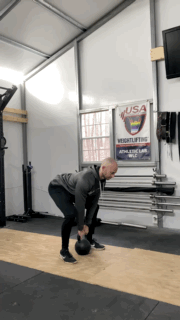
Runners in full marathon training can do cross-training workouts two or three times per week, focusing on a different area of the body in each session. You can add abs to each of your cross-training sessions as long as they’re fully recovered from your last session.
For some weight training exercises, like squats and lunges, it’s a good idea to start by using body weight only. Once you’ve developed a feel for good form, start to add weight.
If you have a running coach, discuss cross-training and how you might use it to enhance your running. They may have suggestions and ideas for the types of exercises that would be most beneficial to you. They can also help you determine where to place your cross-training workouts among your weekly tempo run or speedwork.
Cross-Training for Marathon: Final Thoughts
Cross-training is an excellent way to enhance your marathon training. Runners are at risk of injury because of the repetitive movements the sport requires. Cross-training can strengthen stabilizer muscles and give your mover muscles a chance to recover or simply use them in different ways to build dynamic strength.
Don’t forget to:
- Rest. Runners are notorious for overuse injuries. Cross-training can help. But if you find yourself injured or chronically fatigued even though you’re doing cross-training, you may need more rest days with no training at all.
- Cross-train to target weaknesses and imbalances that develop during marathon training. If you need better aerobic endurance, cycle or swim on your cross-training days. If you’re working on speed, plyometrics and strength training are good options.
- Use your cross-training days to enjoy activities outside of running.
- Always begin your workouts with a warm-up and end with a cool-down.
Cross-Training for Marathon: Q&A
What strength exercises should runners do?
Running is basically jumping from one foot to the other in quick succession. The best cross-training often includes strengthening the lower body with squats, lunges, and plyometrics offer running-specific benefits.
Is cross-training good for marathon runners?
Cross-training activities are excellent training for marathon runners. Marathon training can be labor- and time-intensive. You may only cross-train on one or two days a week, but that’s enough to provide benefits.
What are the reasons runners should do cross-training?
Cross-training uses the primary mover muscles used when running in different ways. Sometimes they get a rest and other times, they’ll get worked in different movement patterns. At the same time, the stabilizer muscles will get strengthened and targeted to develop better balance, coordination and stability. Cross-training can also prevent overuse and overtraining problems, keeping you interested and engaged so you can become a better runner.
References
- Ramirez-Campillo R, et al. Effects of plyometric training on endurance and explosive strength performance in competitive middle- and long-distance runners. Journal of Strength and Conditioning Research. 2014; 28(1): 97-104. Doi: 10.1519/JSC.0b013e3182a1f44c
- Lundstrom CJ, et al. Effects of plyometrics and explosive speed training on recreational marathoners. Journal of Sports Science 5. 2017: 1-13. doi: 10.17265/2332-7839/2017.01.001
- Rodas DF and Ofrin DD. Training environment and athlete runners’ physical development: Basis in designing cross training program. 2023; 2(7).
- Grier T, et al. The effects of cross-training on fitness and injury in women. The United States Army Medical Department Journal. 2015: 25.
- Toresdahl BG, et al. A randomized study of a strength training program to prevent injuries in runners of the New York City marathon. American Orthopaedic Society for Sports Medicine. 2019; 12(1). Doi: 10.1177/1941738119877180
- Lundstrom, C. J., Russell, H. C., O’Donnell, K. J., & Ingraham, S. J. Core and plyometric training for recreational marathon runners: effects on training variables, injury, and muscle damage. Sport Sciences for Health, 2019; 15(1): 167-174. Doi: 10.1007/x11332-018-0506-6
- Paquette MR, et al. The impact of different cross-training modalities on performance and injury-related variables in high school cross country runners. The Journal of Strength and Conditioning Research. 2018; 32(6): 1745-1753. doi: 10.1519/JSC.0000000000002042
- Carrad J, et al. Diagnosing overtraining syndrome: A scoping review. Europe PMC. 2021; 14(5): 665-673. doi: 10.1177/19417381211044739
- Finatto P, et al. Pilates training improves 5-km run performance by changing metabolic cost and muscle activity in trained runners. PLOS ONE. 2018; 13(4). Doi: 10.1371/journal.pone.0196509


